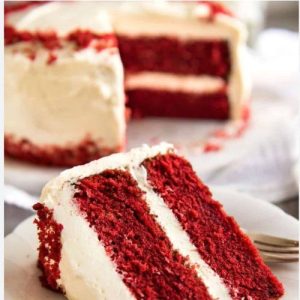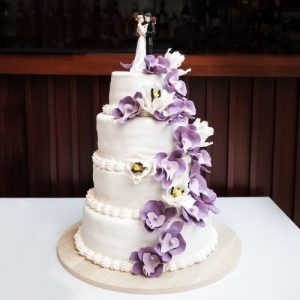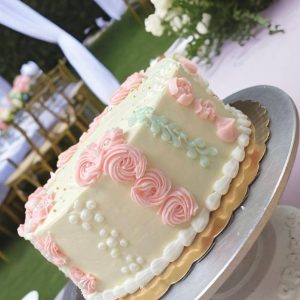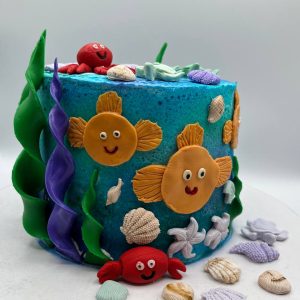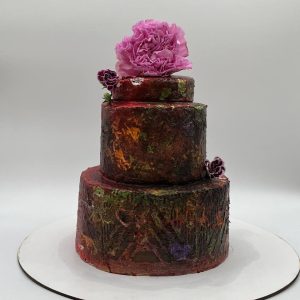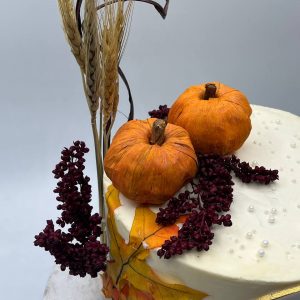Cake Size Calculator
Calculate the size of your party cake online
Planning the perfect cake size for your event just got easier! Our Cake Size Calculator helps you quickly determine the ideal cake size based on your number of guests, slice preferences, and layers. Whether it's a wedding, birthday, or any special occasion, get the exact size you need to ensure every guest is served. No more guessing—just enter your details and let the magic happen!

How to Use the Cake Size Calculator
Using the Cake Size Calculator is straightforward and helps you quickly determine the right cake dimensions:
1. Guests: Enter the number of guests expected.
2. Portion Size: Select the preferred slice size: small, standard, or large.
3. Cake Type: Choose the cake shape—round, square, or sheet cake.
4. Tiers: Indicate the number of tiers (1-5).
5. Calculate: Click the "Calculate" button to see recommended sizes for each tier.
Now, let’s dive into other key factors and tips for selecting the perfect cake size for your event.
How to Calculate the Right Cake Size Based on the Number of Guests
Determining the correct cake size requires considering both the number of guests and the specific event type. Here are the primary factors to keep in mind:
Portion Sizes: Standard slices (1×2 inches) are great for formal events, while casual gatherings may prefer larger 2×2-inch slices.
Cake Size Estimates: A 6-inch round cake serves 8-10 people, an 8-inch cake serves 12-16, and a 10-inch cake serves 20-30.
Consider Additional Desserts: If you have other desserts, you might need a smaller cake.
Tips:
– Always estimate a few extra slices to account for unexpected guests.
– Adjust slice sizes depending on the cake’s richness and type.

Best Practices for Choosing the Right Cake Size
While calculators provide quick answers, understanding the principles behind cake sizing can help you make better decisions:
Key Considerations:
Event Type: Larger slices for casual events, smaller, elegant slices for formal settings.
Cake Type Influence: Dense cakes like chocolate or fruit cake may require thinner slices.
Servings per Shape: Square cakes often yield more servings compared to round cakes of the same size.
Practical Tips:
Collaborate with your baker to ensure that the calculator’s output matches your event’s needs.
For large gatherings, consider a multi-tiered cake to accommodate different tastes and presentation preferences.
Round vs. Square Cakes: Understanding the Difference
Selecting the right cake shape not only affects the visual appeal but also how the cake is served.
Differences to Note:
-Round Cakes: Typically more visually appealing, ideal for formal settings like weddings.
-Square Cakes: Offer more servings per inch and are easier to slice into uniform pieces, making them practical for large parties.
Extra Tips:
– Square cakes are great when maximizing servings is a priority.
– Round cakes can be styled in more traditional or contemporary ways, depending on the event theme.
Tips for Determining Slice Sizes for Your Guests
The size of each cake slice plays a big role in ensuring all guests are satisfied, especially when catering to various age groups and preferences.
Important Points:
– Formal Events: Keep slices smaller for a more refined appearance.
– Using Hot Knives: For clean, even cuts, use a hot knife, especially with cream-heavy or layered cakes.
– Flexible Sizing: For mixed crowds, consider offering both small and large slices to cater to different appetites.
Additional Advice:
– Plan for slightly larger slices if the cake is particularly rich or has dense fillings.
How Many People Can Your Cake Serve?
Serving capacity varies significantly depending on the cake’s size and shape. A proper calculation helps prevent running out of servings mid-event.
Quick Guide:
– Single-Tier Cakes: Best suited for smaller gatherings, usually serving 8-30 guests depending on size.
– Multi-Tier Cakes: Ideal for larger events, with each tier serving a different number of guests based on its size.
Tips:
– Check standard serving charts or consult with a professional baker for complex cake setups.
– Always have a small buffer in your calculations to accommodate extra servings.
Calculating Cake Size for Different Events
Event type, guest expectations, and the role of the cake (main dessert or part of a dessert spread) all influence the necessary cake size.
Considerations:
– Main Dessert: If the cake is the highlight, opt for larger sizes.
– Accompanied Desserts: For events with additional desserts, a smaller cake may suffice.
Extra Insights:
– Use past experiences or similar event references to refine your cake size decision-making process.
Cake Sizing for Birthday Parties: A Complete Guide
Birthday cakes need special attention, especially when dealing with diverse age groups like children and adults.
Guide for Choosing the Right Size:
– Children’s Parties: Larger, creative slices appeal more to kids.
– Adult Celebrations: Elegant, refined slices paired with other small treats can enhance the experience.
Additional Tip:
– Having a small additional layer or mini cake for special guests like the birthday person can make the event extra memorable.

Common Mistakes in Cake Sizing and How to Avoid Them
Even with careful planning, some mistakes are common when choosing cake sizes.
Common Pitfalls:
– Overestimating Need: Leads to wastage and unnecessary expenses.
– Underestimating Portions: Creates stress and discomfort when servings run short.
– Ignoring Event Type: Choosing the wrong slice size for the event can disrupt the flow of serving.
Solutions:
– Regularly revisit your estimates during the planning process.
– Use a cake size calculator to double-check your manual estimates.
The Importance of Choosing the Right Cake Size
The impact of selecting the correct cake size goes beyond just servings; it affects budget, guest satisfaction, and overall event ambiance.
Key Benefits:
– Cost Savings: Accurate sizing prevents waste and over-ordering.
– Enhanced Guest Experience: Ensures everyone gets served without running out.
– Reduced Stress: Confidence in cake size planning reduces last-minute anxiety.
How to Calculate Sizes for Multi-Tier Cakes
Multi-tier cakes add visual appeal but require careful size calculations for each layer to ensure a balanced and stable structure.
Important Factors:
– Base Stability: Ensure the bottom tier is sufficiently large to support upper layers.
– Layer Variety: Incorporating varying sizes enhances visual interest.
– Serving Calculations: Plan each tier’s size based on how many guests it needs to serve independently.
Additional Advice:
– Always consult with your baker for precise structural guidance, especially for elaborate multi-tier designs.
Selecting the Perfect Wedding Cake Size Based on the Number of Servings
Choosing the right wedding cake size is crucial to ensure that every guest enjoys a slice, without the risk of running out or having too much leftover. Here’s how to determine the ideal size for your wedding cake:
Key Considerations:
– Guest Count: The most important factor is knowing how many guests will be attending. As a general rule, a three-tier cake (6-inch, 8-inch, and 10-inch) can serve about 75-100 guests, depending on slice size.
– Tier Sizes: For larger weddings, consider adding more tiers or increasing the size of each tier.
– Dessert Table: If your cake is part of a larger dessert table, you can opt for smaller sizes since guests may also choose other sweets.
Additional Tips:
– Top Tier Tradition: Many couples choose to save the top tier for their first anniversary. Plan accordingly if you want to follow this tradition, as the servings will be slightly reduced.
– Custom Slice Sizes: Depending on your cake style and guest preferences, adjust slice sizes; smaller slices are typical for formal settings.
Benefits:
– Elegant Presentation: Larger cakes with multiple tiers offer a grand, visually striking centerpiece for your reception.
– Cost Efficiency: Properly sizing your cake ensures you are only paying for what you need, reducing waste.
Final Thoughts:
– Collaborate closely with your baker to determine the perfect combination of tier sizes and overall height to match both your aesthetic desires and guest needs.


